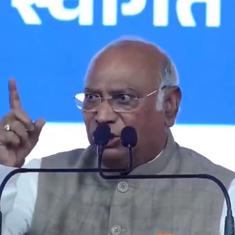In the summer of 1999, as a young gay person in Bombay, we had no public spaces where we could be out. The idea of pride was confined to our mind, or private hush conversations over coffee or a McDonald burger. But once a year, a large party would be organised in the northern coastal haven of Marve. There,in a private bungalow, a gay/queer gathering of hundreds would be our limited experience of a shared pride.
Last weekend, the images of queer people strutting and slaying in the Mumbai Queer Azaadi parade took me back to those deeply cherished moments of the freedom I felt within the confines of the Marve bungalow.
But there was something different and braver in the Queer Azadi gathering that we lacked in the late 1990s: the confidence, the solidarity and the sloganeering. We were terrified of being gay back then and the two last decades have been about working very hard to fight that fear both within our hearts and outside.
Police action
At one such Marve party, our fears became real with a massive raid of over 100 men and women from the Mumbai Police who stopped us, abused us, lined us up in our shame. They scolded the trans women, slapped the effeminate gay boys and ridiculed the others. We were made to stand in files of separate lines for hours, give our family names, copies of IDs and phone numbers and released in batches. The memory of that police violence set us back for years. That fear has never left me.
It was invoked on Wednesday morning when I read that a young trans queer person has been charged along with 50 other unnamed people with the draconian colonial-era sedition charge for exercising their fundamental right both as citizens of India and as queer persons to express their opinion. What is worse is that it happened in the safest space we have fought to create: the annual Pride parade.

I missed the event, but watched every minute of it on social media. The Mumbai Queer Azadi March this year was confined to the expanse of Azad Maidan. It had a very different character but a huge turnout of several thousands, all gathered around a large stage. The organisers took their hard work and skill to another level by making the Pride event even more diverse. The queer icon Harish Iyer made it a point to highlight the intersectionality of our presence both as queers and women, trans, lower and upper caste, among our various religious hues.
Celebrating diversity
Hearing- and speech-impaired queers signed their pride to huge roars of applause. There were queer Dalit groups and queer vegans; dynamic young activists drawing inspiration from the Lesbian, Gay, Bisexual Transgender struggle for freedom and connecting it with the historic wrongs of our caste-based society; and also taking the narrative of rights beyond to the non-human animals, as we are all sentient beings that deserve equal rights.
This is precisely the space of inclusion we have fought for. And this inclusion must also extend to our politics and the diversity of political beliefs. The question is never whether we agree or not with what the activists were sloganeering, but do they have a right – a constitutionally protected right – to express their opinion? I would say yes, and as queer people in a safe queer space, we have a historic moral duty to protect them.
Sedition laws are just as unconstitutional and antiquated as Section 377 of the Indian Penal Code that criminalised homosexuality. Our struggle has always been to abolish draconian colonial laws that violate our Constitution, not to enforce them. Let us never forget that.










